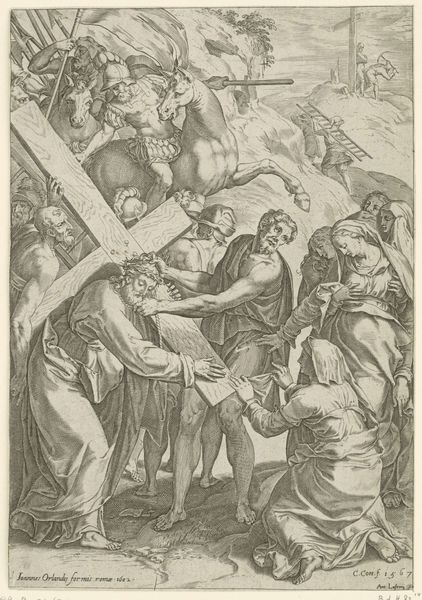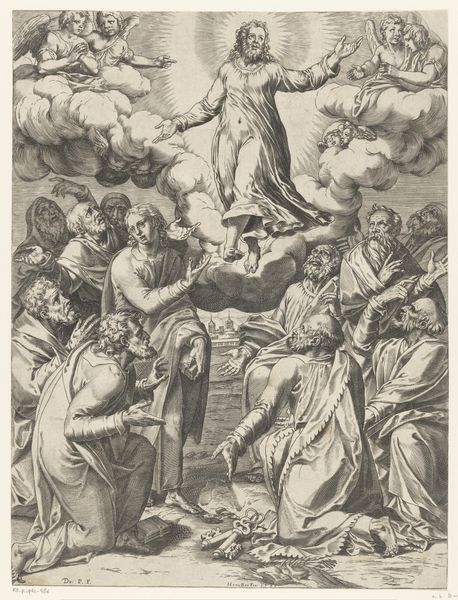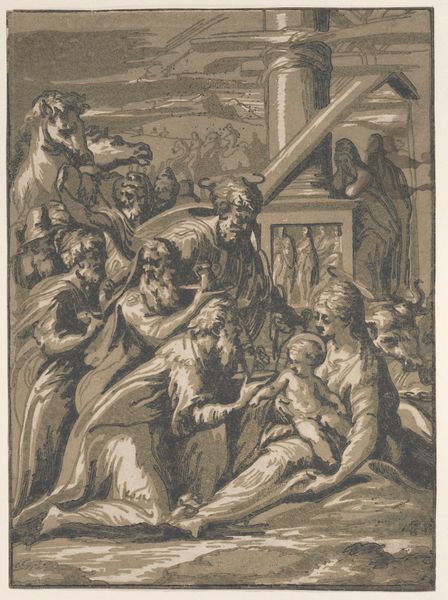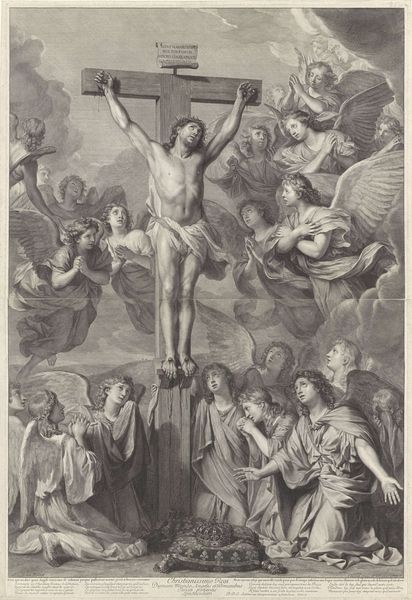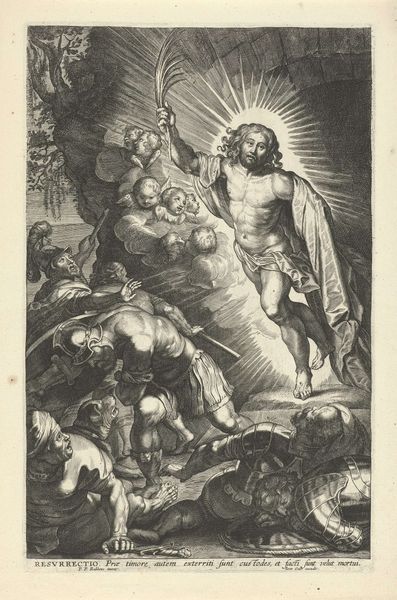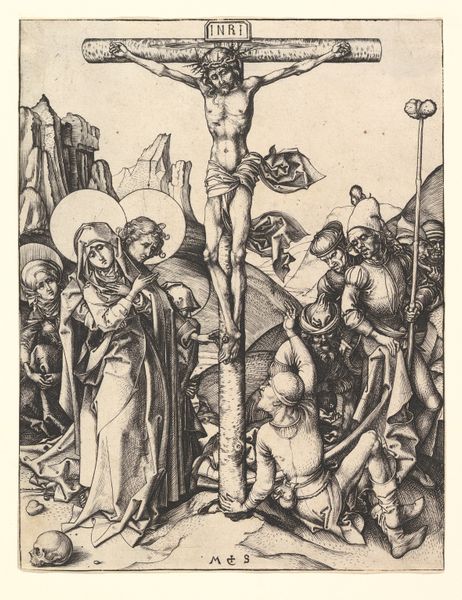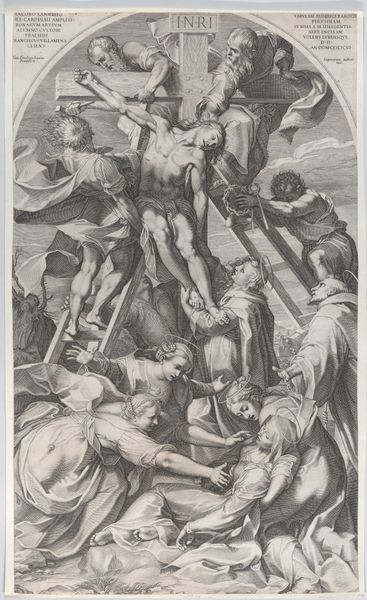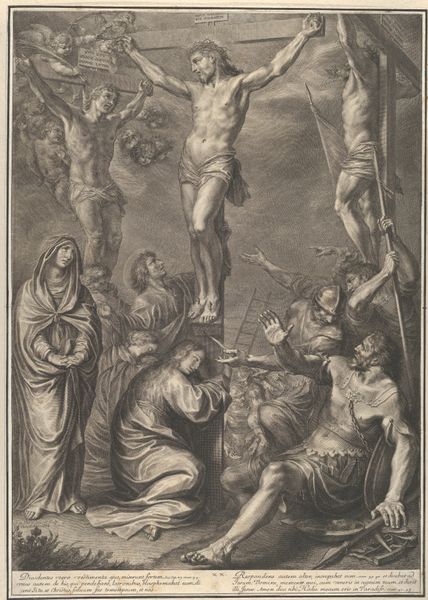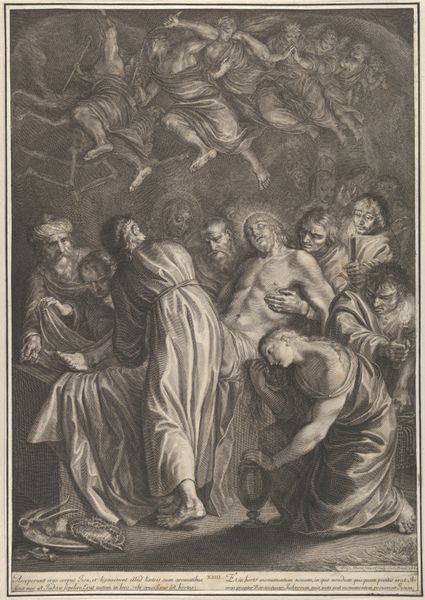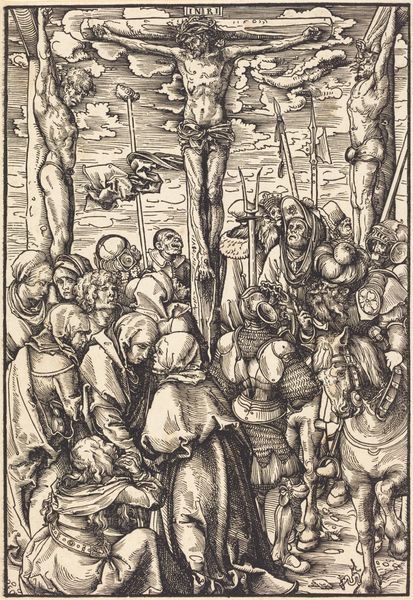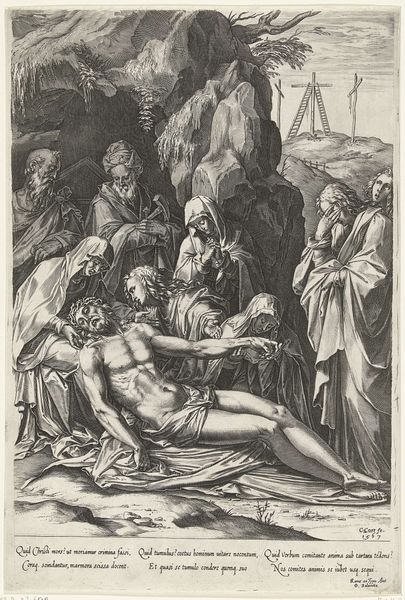
print, engraving
#
baroque
# print
#
figuration
#
line
#
history-painting
#
engraving
Dimensions: height 312 mm, width 231 mm
Copyright: Rijks Museum: Open Domain
Curator: Here at the Rijksmuseum, we have a fascinating engraving attributed to Willem van Swanenburg, dating from sometime between 1603 and 1652. It's called "Verlamde door het dak naar Christus neergelaten," which translates to "Paralytic lowered through the roof to Christ." Editor: Wow, what a scene! My initial reaction is one of claustrophobia, almost. The figures are so densely packed, it’s like they're all vying for space in this intensely dramatic moment. The swirling lines of the engraving heighten the feeling of commotion and urgency. Curator: The density you observe aligns with the baroque aesthetic, emphasizing drama and emotion. As a print, it reflects a broader trend of disseminating biblical narratives through easily reproduced images, bringing religious stories to a wider audience, particularly during the Counter-Reformation. It puts front and center Christ’s miraculous act and therefore the power of the Catholic Church at the time. Editor: Absolutely. I am drawn to how it represents disability. The central figure, the paralytic, is both the focus and utterly dependent on the strength and actions of others. What does it say about the role of community, of access, and who gets to participate in this divine encounter? His very inclusion challenges ableist assumptions. Curator: A potent point. The artist also chooses to emphasize specific emotions: devotion, desperation, curiosity. Observe Christ's calm, central presence amidst the chaos. The scene becomes a demonstration of faith put into action; his followers truly believe in his message. Editor: True. The engraving feels very performative. It’s a testament to faith but also raises questions of representation. Does the artist truly understand the paralytic’s experience, or is he merely a tool to highlight the miracle of Jesus? Whose gaze truly matters here? It really reminds me how such imagery can unintentionally perpetuate harmful stereotypes. Curator: It brings a layered historical context. Considering its baroque visual elements and dissemination as print during the Counter-Reformation, there is undoubtedly a persuasive quality inherent in its role as both artwork and religious object. Editor: Reflecting on the print as a whole, it's clear this artwork isn’t just a passive illustration. It demands that we consider the narrative power and impact, past and present. What is visible, but more importantly, what remains unspoken.
Comments
No comments
Be the first to comment and join the conversation on the ultimate creative platform.
